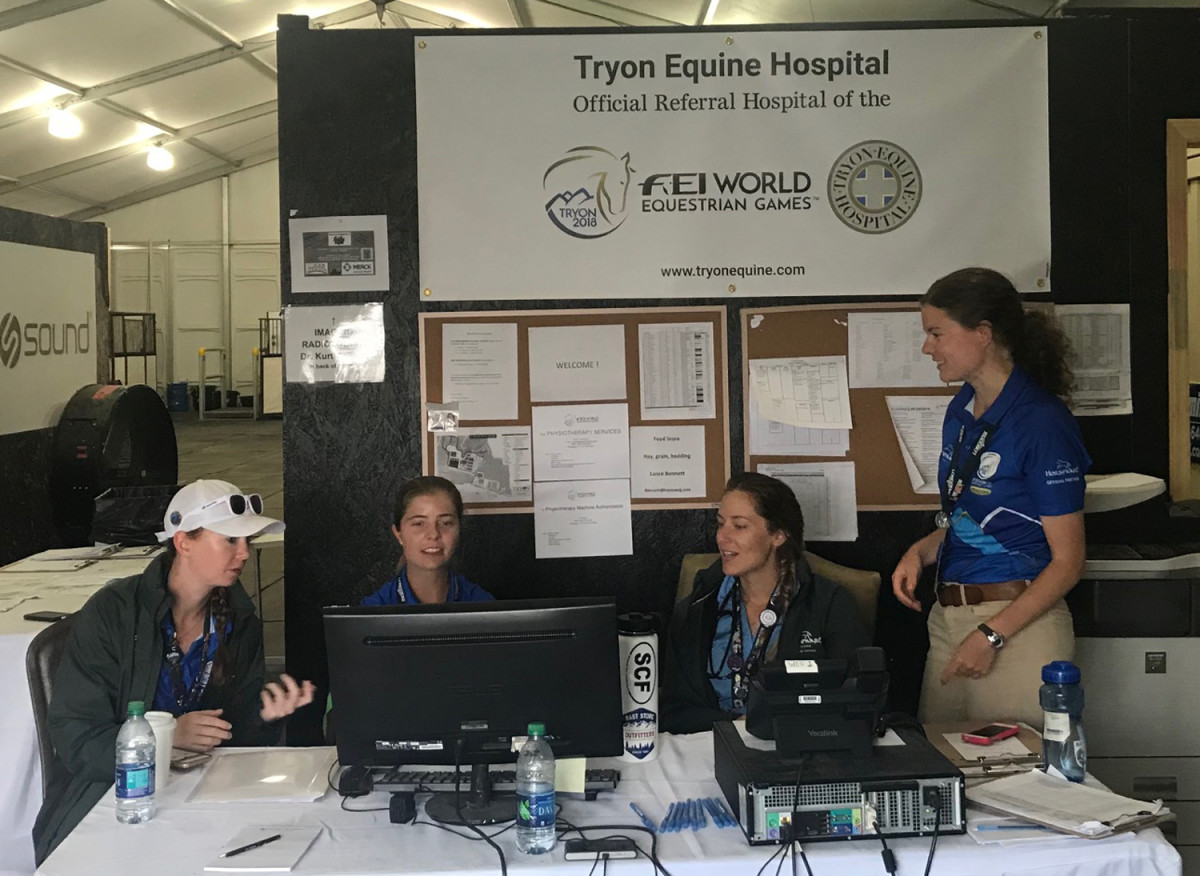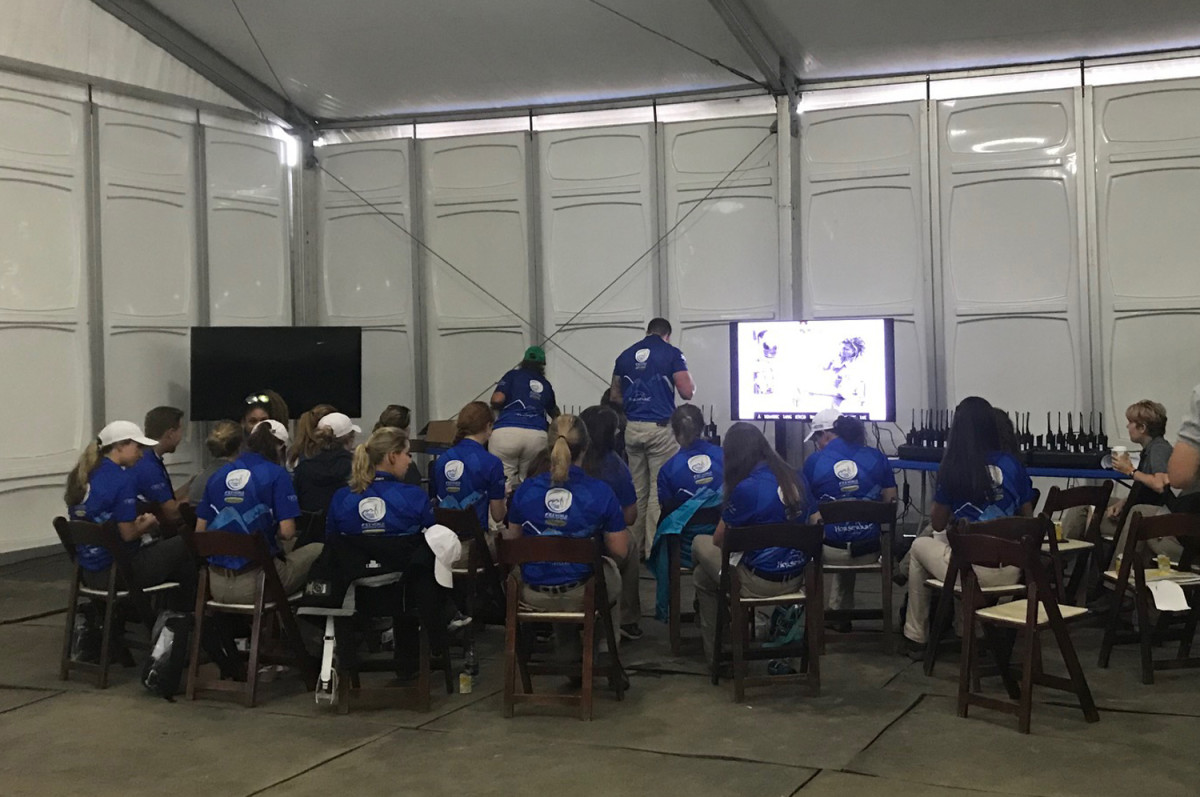
Bill Hay, DVM, DACVS, with his wife, Anne Baskett, DVM, DACVS, is overseeing the treating veterinarians at the Fédération Équestre Internationale (FEI) World Equestrian Games (WEG) Tryon 2018. Hay and Baskett designed the temporary equine hospital at the venue with specific purposes in mind. With more than half of the competitions completed, we chatted with Hay about what ended up being the most essential areas of the hospital so that other veterinarians and show grounds managers might benefit from the WEG experience.
1. Reception. “We are here to serve the team veterinarians,” said Hay. We have the AAEP vet students as well as three of our staff from Tryon Equine Hospital manning the reception area. They are here to take care of the vets. It’s like your own vet hospital, the front desk is important.”
2. Large meeting area. Hay said he pushed hard to include this area in the hospital design in order to provide a space for the students who have lectures, for veterinary meetings, and for the team veterinarians to use to meet. “There’s never enough meeting room at an event,” said Hay.

AAEP veterinary students attend lectures in the meeting area in the equine hospital at WEG. Lauren Feldman
3. Abaxis lab. “The lab is an essential component of the hospital, and the teams expect major events to have a lab,” said Hay. He called the lab “priceless” in the overall scheme of things at the hospital. “Abaxis even set up a lab for the end of endurance at the event location to use when horses came off course,” he said. “At one point, I bet we had 20 (blood analyzer) machines going.”
4. Sound imaging center. Kurt Selberg, MS, DVM, DACVR (radiology), of Colorado State University, was brought in by Sound to man the imaging center, said Hay. Selberg was available to provide consultation for any team vet. “We needed a partner with the equipment and people to back it up,” said Hay. “For example, we got a call that a horse at one of the farrier stations needed X rays, so Dr. Selberg loaded up the portable equipment and went over to assist. It is priceless getting a good image at the right time.”
5. Physiotherapists. FEI now requires equine therapists to be “carded” in order to work on horses at an event. The new rules pertain to modalities and the people who are allowed to use them. “These modalities are as important to veterinarians as they are to horses,” said Hay.
(Editor’s note: For more on the Equine Physiotherapy veterinary team at WEG see Physical Therapy for Horses at WEG Tryon 2018, and for information about the new FEI rule for physical therapists see FEI Now Requires Cards for Equine Therapists.)
Health coverage of WEG Tryon 2018 is brought to you by KindredBio Equine.








